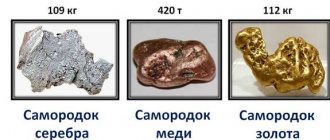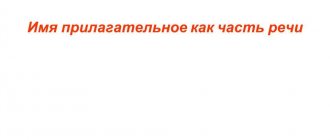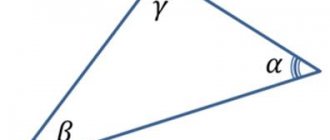Chemistry lesson notes, 11th grade. pH value
Summary of a chemistry lesson on the topic: “Hydrogen index”, grade 11
Author: Elena Aleksandrovna Tairova, chemistry teacher, MBOU gymnasium 44, Penza This development of a lesson summary is intended for chemistry teachers. The material allows you to conduct an interesting lesson in learning new material in the 11th grade using the technology of developing critical thinking through reading and writing, the technology of a problem lesson. Goal: creating conditions for the formation of the concept of pH value. Objectives: Educational.
1. Introduce students to the concept of the ionic product of water;
concentrations of H+ ions in acidic, neutral and alkaline solutions; with a hydrogen index - a negative logarithm of concentration; with methods for determining pH. 2. To update students’ knowledge about the reaction of solutions of acids, alkalis, and salts; changes in the color of indicators (litmus, methyl orange, phenolphthalein) in different environments. 3. Measure with students the pH of some solutions using a universal indicator: distilled, carbonated water, vinegar solution, lemon juice, ammonia solution, soap solution, pipe cleaner, baking soda solution; lead students to explain the reasons for the pH values of these solutions. 4. Experimentally (during a home experiment) prove that the juices of some plants can also serve as acid-base indicators (using the example of red cabbage juice). Educational.
Promote the development of a creative attitude towards educational activities;
fostering accuracy and attentiveness when performing work with acidic and alkaline solutions. Developmental.
Develop skills of independent mental work: improve the ability to independently obtain information from an educational text, analyze the text, form a critical thinking style;
develop practical skills to conduct experiments. Equipment: pH sensor connected to a computer, projector, educational texts (one per desk), trays with test tube racks and numbered test tubes with household solutions (one per desk). Reagents: indicator solutions - litmus, methyl orange, phenolphthalein, universal indicator paper, household solutions - carbonated water, solutions of vinegar, lemon juice, ammonia, soap, pipe cleaners, baking soda, distilled water.
Lesson progress:
Organizational moment - Hello, guys! I am glad to meet you, I wish you a good mood and fruitful work. Challenge phase - Guys, let's create a cluster “Reaction of solution environment”. Student makes a cluster on the board
-How to determine the reaction of a solution? Indicators. What indicators do you know? - Litmus, methyl orange, phenolphthalein. -How do their colors change depending on the reaction of the environment? Make clusters. Students form clusters at the board. - Let's play the game “Believe it or not.” I read out the statements and you decide and tell me whether you believe them or not. • Vinegar solution is less acidic than lemon juice. • Soap solution is more alkaline than baking soda solution. Some guys say they believe, and others say they don’t. - How many opinions are there in our class? ( encouraging awareness of contradiction
) - Two different opinions (
awareness of contradiction
) - What question arises?
( encouragement to formulate an educational problem
) -How to prove exactly which solution is more acidic and which is more alkaline?
( learning problem as a question
) - So, how do you think this can be done? Let's brainstorm. - The taste. - So, everyone agrees? — You cannot try substances in a chemical laboratory. — Using indicators, based on the intensity of their color. - So, everyone agrees? - Yes. - Then let's try it. Work in pairs, determine the reaction of the environment using indicators of some household solutions poured into numbered test tubes located on your tables: vinegar, ammonia solution, lemon juice, sparkling water, drain cleaner, soap solution, baking soda solution, distilled water. The first row examines solutions with litmus, the second with methyl orange, and the third with phenolphthalein. Then we all fill out the table together:
Students conduct an experiment, observing safety rules, report the results, and receive a completed table:
- Were you able to find out which solution is more acidic - vinegar or lemon juice, and which is more alkaline - a solution of soap or baking soda? — No, the color intensity of the indicator was the same. - So, let's think about it again, when can we compare the values? - When there is a quantitative value. - Let's think about what can be measured? What particles determine the acidity of the environment? — Hydrogen cations — H+ -Okay, how were they formed in the acidic household solutions we studied? Students write down on the board the reaction equations for the dissociation of acetic and citric acids, carbonic acid formed by the interaction of carbon dioxide with water.
— The presence of what particles in a solution makes it alkaline? - Presence of hydroxide ions - OH- -Okay, how did they form in the alkaline household solutions we studied? Students at the blackboard explain the presence of hydroxide ions in alkaline solutions.
-The presence of which particles in a solution determines the neutral reaction of the medium? - Water molecules. - No, not only is water neutral, it is probably the absence of hydrogen cations or hydroxide ions. Students express different opinions and find it difficult to determine the correct version. — We can answer this and other questions posed during the lesson by studying the educational text.
Conception phase
The teacher offers the students an educational text: Students in pairs study the educational text, which the teacher gives to each desk, and complete tasks for the text.
Reflection. -Guys, let's formulate the topic of today's lesson. What text title options would you suggest? — Quantitative characteristic of acidity or basicity. — Dissociation of water. pH - Hydrogen index. — Okay, the topic of our lesson is “Hydrogen index.” — What options for support schemes can you offer? After discussing the options for reference signals, we settle on a support of this type and write it on the board:
— Now we will measure the pH of household solutions given to you using universal indicator papers, and we will try to prove the falsity or truth of my statements in the game “Believe it or not.” Let me remind you that I stated that a vinegar solution is less acidic than lemon juice, and a soap solution is more alkaline than a baking soda solution. Four students at the blackboard demonstratively measure the pH of household solutions of vinegar, lemon juice, soap solution, and baking soda solution. — Did you manage to find out which is more sour, vinegar or lemon? — No, the color of the indicator paper is the same, the pH is around 2-3, it is impossible to determine more precisely. - Can you determine which solution is more alkaline - soap or baking soda? - Yes, the soap solution is more alkaline, pH 10, and the baking soda solution is less alkaline, pH 9. - Why couldn’t you find out which solution is more acidic? — The accuracy of determining the pH value using a universal indicator is equal to unity, i.e. we find a rather inaccurate pH value for the solution. “Indeed, a more accurate pH value can be measured with a digital pH sensor connected to a data acquisition system and a personal computer.
The teacher demonstrates the technique of working with a pH meter that operates in real time; the pH value of the solutions being studied is displayed on a large screen through a multimedia projector. Students record the pH value of the solutions in their notebooks, adding a column to the previously prepared table.
The teacher invites students to draw a conclusion about which of the household solutions being studied has a more acidic and which has a more alkaline reaction. — The most acidic solution is lemon juice, the most alkaline solution is a pipe cleaner. Therefore, both statements of the teacher in the game “Believe it or not” are true.
For students who incorrectly draw conclusions from the experiment, the teacher asks them to re-read the educational text and check that the table is filled out correctly:
— And, in conclusion, let’s write a syncwine on the topic of our lesson “Hydrogen index.” For example:
Hydrogen index.
Accurate, diagnostic. Measures, shows, defines. An indicator of the concentration of hydrogen ions. pH Take-home task Conduct a home experiment by following these steps: add red cabbage juice to household solutions (vinegar, ammonia solution, lemon juice, soda water, drain cleaner, soap solution, baking soda solution) and determine what color it takes this indicator over the entire pH range.
Insert the obtained data into the table we started in the lesson. Can red cabbage juice be used as an indicator to determine the strength of acids and alkalis? Explain. List the advantages and disadvantages of red cabbage juice as an indicator. A decoction of red cabbage can be prepared by boiling it in water. Alternatively, you can puree the red cabbage in a blender, then strain the juice. Download Chemistry lesson notes on the topic: “Hydrogen index”, 11th grade
We recommend watching:
Activation of students' mental activity in literature lessons using TRKM Chemistry lessons for 1st year college Synopsis of a chemistry lesson for 11th grade. Factors influencing the rate of chemical reactions Chemistry lesson notes for grade 11. Chemistry in human life
Similar articles:
Application of problem-based learning in mathematics lessons
Innovative approaches to teaching gifted children in chemistry lessons




